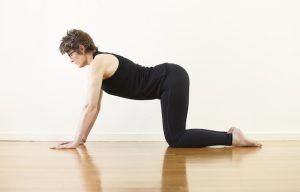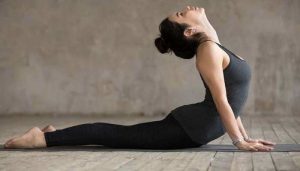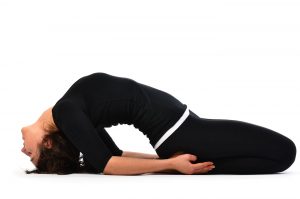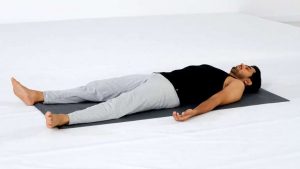
PREMENSTRUAL SYNDROME – YOGA ASANAS
- January 27, 2023
- Posted by Dr. Vaidya Karanvir Singh
- 0 Comment(s)
Table of Contents
INTRODUCTION
Premenstrual syndrome is a group of physical, emotional and behavioral changes which occur in females before menstruation. It usually starts between ovulation and the onset of next periods. It lasts for a few days and lasts till the beginning of the upcoming period. The common signs and symptoms include tenderness in breasts, food cravings, mood swings, irritability and depression. Nearly every 3 out of 4 women experience premenstrual syndrome. The symptoms vary from person to person and their intensity ranges from mild to severe.
Premenstrual syndrome can have an impact on the daily life of an individual. But with the dietary and lifestyle modifications, the symptoms of premenstrual syndrome can be managed. There are various medicines also which are beneficial in it.
WHAT ARE THE CAUSES OF PREMENSTRUAL SYNDROME?
The exact cause of premenstrual syndrome is not known but is believed to be due to several factors. Following are the reasons which can be responsible for premenstrual syndrome:
- Hormonal fluctuations
- Fluctuation in serotonin – a neurotransmitter that plays a role in mood states
- Depression
- Cigarette smoking
- Lack of physical exercise
- Sedentary lifestyle
- Lack of sleep
- Eating foods rich in sugar, fat and salt
WHAT ARE THE SIGNS AND SYMPTOMS OF PREMENSTRUAL SYNDROME?
The common signs and symptoms of premenstrual syndrome are:
- Abdominal cramps
- Bloating
- Tenderness in breasts
- Body pains
- Swelling in hands and feet
- Acne
- Headache
- Diarrhea or constipation
- Increased appetite
- Increase in body weight
- Stress
- Anxiety
- Difficulty in sleeping
- Forgetting things
- Mood swings
- Crying
- Angry outbursts
- Lack of concentration
- Social withdrawal
- Lack of interest in daily activities
- Back pain
- Clumsiness
- Decreased sexual drive
HOW PREMENSTRUAL SYNDROME CAN BE PREVENTED?
Premenstrual syndrome can be managed by a lot of ways. The symptoms will not be totally vanished but they can be lessened to such an extent that it does not interfere in the life of an individual. Following are the steps which are good for prevention of PMS:
- Do regular exercise for 20-30 minutes a day
- Eat healthy diet which includes fruits, vegetables, whole grains, etc
- Take proper sleep of 7-8 hours
- Avoid excess intake of salt and caffeine
- Say no to alcohol
- Quit smoking
YOGA FOR PREMENSTRUAL SYNDROME
Yoga is an ancient science which involves various types of asanas for body and mind relaxation. It helps in stretching of body and releasing pressure from the body. Different types of yoga asanas are very helpful in managing symptoms of premenstrual syndrome. Following are the yoga asanas beneficial in PMS:
1. MARJARIASANA
Marjari means cat and asana means body posture. Marjariasana is called cat stretch. It is an excellent stretching posture.
How to do it:
- Come onto the fours- arms and legs, with back forming the top of the table.
- Arms should be perpendicular to the floor and knees are hip-width apart from each other.
- While inhaling, raise the chin and bend the head backwards. Push the navel downwards and raise tailbone.
- This is the cat pose. Hold it for 1-2 minutes and take deep breathes.
- Then exhale and release the pose gradually.
- Do the pose for 4-5 times.
Contraindications:
- Neck injury
- Back injury
2. BHUJANGASANA
Bhujanga means cobra and asana means body posture. Bhujangasana is the cobra or snake pose. It can be done easily at home while lying down on the stomach and then stretching. It gives a good stretch to the body and instantly relieves stress.
How to do it:
- Lie down in stomach with the toes flat and soles facing upwards.
- Rest the forehead on the ground, keep the legs closer with feet and heels touching each other.
- Now slowly lift the body while taking a deep breath in. The navel should be kept in ground level.
- Both the hands should have equal pressure while pulling on and off of the torso from the ground.
- Hold the pose for 4-5 breaths. Then, breathe out and bring the abdomen, chest and head gently on floor.
- Repeat it for 4-5 times.
Contraindications:
- Pregnancy
- Carpal tunnel syndrome
- Hernia
- Recent abdominal surgery
- Fracture of ribs or wrist joints
3. DHANURASANA
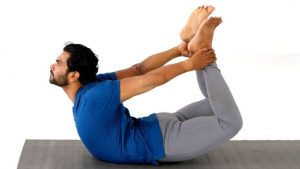
Dhanu means bow and asana means body posture. In dhanurasana, the shape of the body is made like that of a bow. The pose should be performed 4-5 hour after meals. The best time is of early morning.
How to do it:
- Lie in the stomach with the feet apart.
- Then fold the knees and take your hands backwards and hold the ankles.
- Breathe in and lift the chest up from the ground. Pull the legs upwards and more towards the back.
- Keep the body posture stable and see forward. Pay attention to the breath.
- Maintain posture for 15-20 seconds and bring the legs and chest gently to the ground.
Contraindications:
- Neck injury
- Hernia
- Hypertension or hypotension
- Lower back pain
- Migraine
- Recent abdominal surgery
4. MATSYASANA
Matsyasana is the fish pose asana. If this asana is carried out in water, the body will float easily like a fish.
How to do it:
- Lie on back with feet together and hands relaxed.
- Place the hands under the hips and bring the elbows close to each other.
- Lift the head and chest up while breathing in.
- When the chest is elevated, lower the head backwards and touch floor with the top of the head.
- Hold the pose as long as a person feels comfortable.
Contraindications:
- High or low blood pressure
- Migraine
- Insomnia
5. SHAVASANA
Shava means corpse and asana means body posture. Shavasana is also known as corpse pose. This asana is a rest and relaxation posture. It is usually performed at the end of a yoga session. It helps in deep healing of the body.
How to do it:
- Lie flat on the back without any cushions or props. Close your eyes.
- Keep the legs apart comfortably and let the feet and knees relax.
- The arms should be kept aside with a little distance from the body. Keep the palms open and facing upwards.
- Breathe slowly and gently and slowly relax your entire body. Surrender the whole body and let go everything. But do not fall asleep.

Dr. Vaidya Karanvir Singh is the younger Vaidya in Chandigarh Ayurved & Panchakarma Centre. He is the fourth generation in his family who is practicing as a general consultant in Ayurved & Panchakarma treatment at Chandigarh. In his practice, he had treated more than 1 Lakh Plus patients worldwide.


